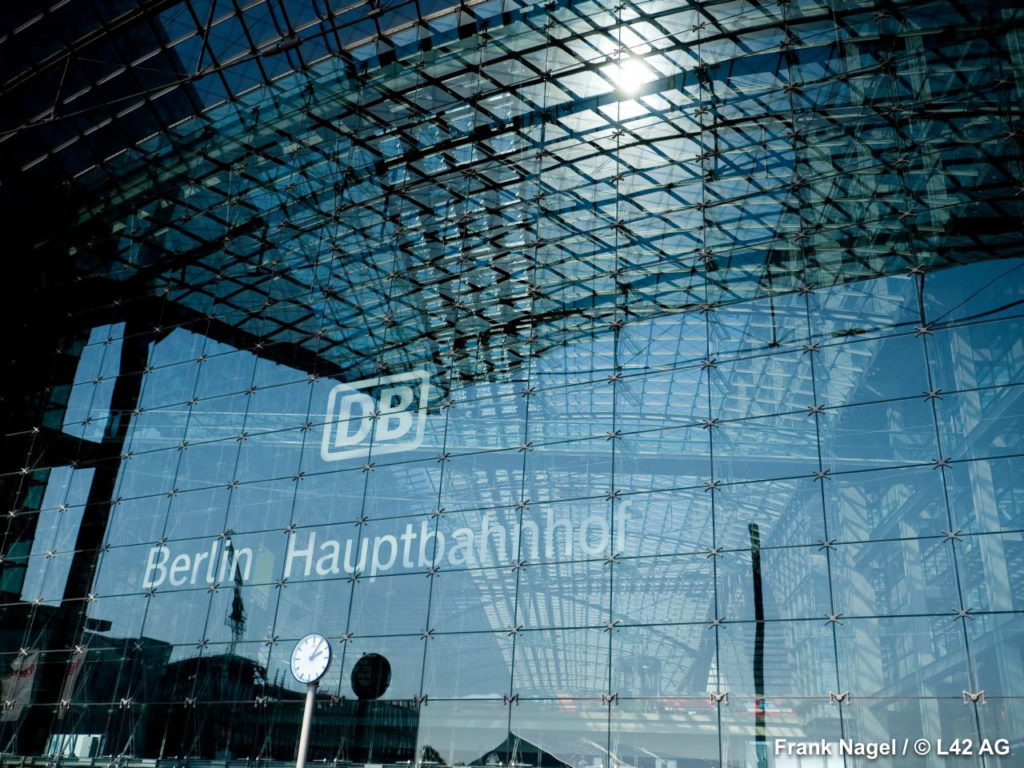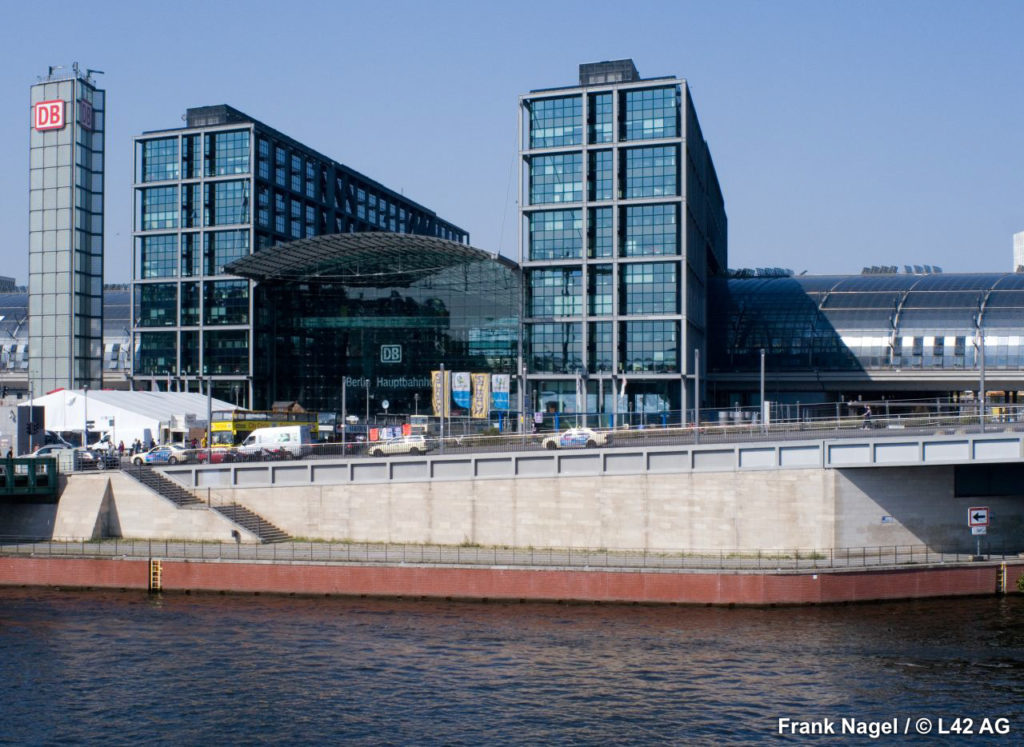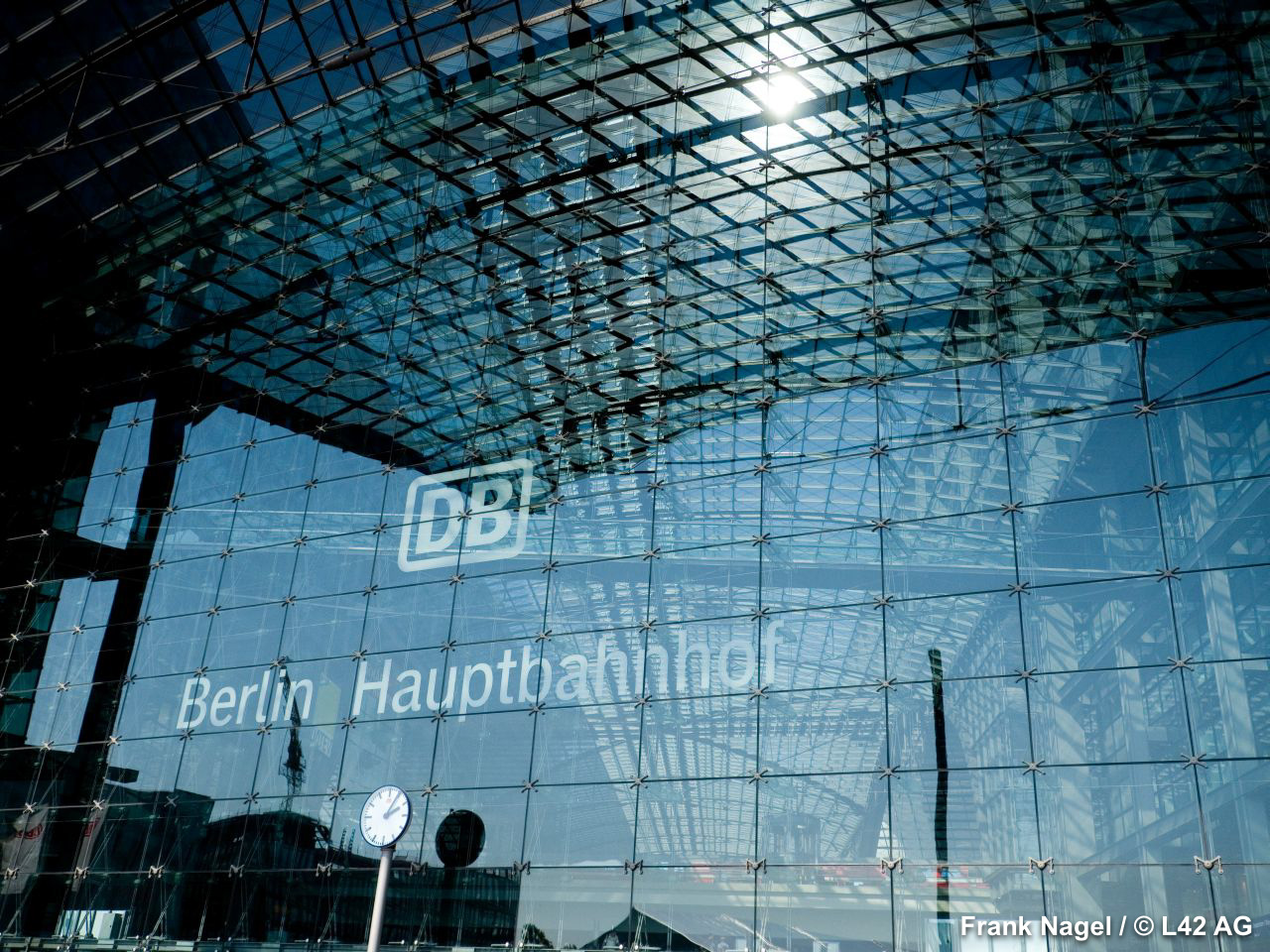
After eight years of work, on May 28, 2006, the new Hauptbahnhof or Central Station of Berlin opened on the occasion of Germany’s hosting of the World Cup. Therefore, this structure, which already seems like such an unmistakable part of the landscape of Mitte, is actually quite young. In fact, up until 2006 Berlin didn’t have a central station. Here, instead, was what was known as the Lehrter Bahnhof. Lehrter Bahnhof was inaugurated November 27, 1871, by Kaiser Wilhelm I. The year of his birth coincided with that of the birth of the German Empire after its victory over France and thus made it a special place indeed. At that time there were already a number of stations in Berlin which had been built by private funds and various companies. Right next to the Lehrter Bahnhof, in fact, you could find the Hamburger Bahnhof, which, however, was closed in 1884. From that moment on, the Lehrter Bahnhof with its vaguely Renaissance-like air increased in importance. That stated, it would never be as popular as the Stettiner Bahnhof (today’s Nordbahnhof), for example, which was erected in 1842 in order to bring the average working-class Berliner to their favorite sea. No, from the Lehrter Bahnhof trains left instead for the aristocratic isles on the North Sea like Föhr, Amrum, and Sylt, as well as for Hamburg and Scandinavia. This is from where, for example, on December 19, 1932, the famous diesel train called Der fliegender Hamburger (on account of its being able to reach a speed of 160/km hour compared to the 90 km/hour of trains considered normal at that time) departed.
If we recall that at that time there were no automobiles or airplanes, it comes as no surprise that the stations also served as the backdrops to many historical encounters. On June 3, 1905, for example, Duchess Cecilie of Mecklenburg-Schwerin met her future husband, the Crown Prince Wilhelm of Prussia, at Lehrter Bahnhof before proceeding together to Bellevue to be married three days later. But that’s not the only couple to have met there by the tracks. On February 26, 1906, Duchess Sophia Charlotte of Oldenburg met Prince Friedrich by those very same tracks (even if their marriage was not to prove a happy one). And many guests arrived at the Lehrter Bahnhof for the marriage of Count Ernst August of Braunschweig to Princess Viktoria Luise of Prussia, the Kaiser’s daughter, in May 1913, including King George V of England. After that, the station primarily welcomed trains full of immigrants from further east, above all Jewish immigrants, many of whom arrived in Berlin with the intention of continuing immediately onward for the United States, a goal which not all were to realize. In August 1914 soldiers departed enthusiastically for the front, full of propaganda and happy to go and win. On November 4, 1918, after the defeat of the German empire, the revolutionary sailors of Wilhelmshaven and Kiel got off at the Lehrter Bahnhof in order to march toward the City Palace of Berlin. And it was also here that Mussolini boarded the train after having visited Hitler in 1937 and to where Hitler returned from Rome the following year after returning the favor to Mussolini. However, as Albert Speer did not foresee a place for the station in his grandiose reorganization plans for the capital, Lehrter Bahnhof’s representative role came to a close. It was bombed in November 1943, again in September 1944, and once more in March 1945, but mainly sustained damage to its roof; therefore, already on June 21, 1945, rail traffic began once again, this time in the shadow of British occupation.
On August 28, 1951, the station was definitively closed and the principal stations of the city became Ostbahnhof in the East and Bahnhof Zoo in the West. Beginning in the 1950s weeds began to grow between the tracks and the station began to be used primarily by children who departed for who knows where with their imaginations. Whatever the post-war gangs of Berliner children lacked in consumer goods, however, was made up for by the improvised games they could play in the ruins of the city, and the Lehrter Bahnhof was one of the more adventurous ones.
In 1956 for safety reasons the decision was made to demolish the station and over the next three years its most dangerous parts were reduced to rubble under the eyes of crowds eager to see any kind of spectacle. When the Wall was constructed in 1961, the Lehrter Bahnhof, even if by that point inactive, became the closest station to the East-West border and was therefore heavily guarded.
In 2002, though considered a heritage site, it was completely demolished as the plans for the Hauptbahnhof foresaw a complete overhaul of the station, beginning with the foundation. And the foundation of the Hauptbahnhof became the symbol of a body-to-body struggle between nature and humankind. But maybe in the end that’s the real reason why the Hauptbahnhof is so attractive – it’s a bit like Venice, rising up out of the water as it does. Indeed, hundreds of people on the river cruises along the Spree treat it as if it were the Basilica of San Marco itself: “My goodness, would you just look at that! The Hauptbahnhof!” But this isn’t a phenomenon related only to water, you’ll hear it whispered on land too, almost as if they had all seen an apparition.

This modern beauty that is continuously mirrored in the river by daylight and illuminated by thousands of lights at night required enormous efforts and constant monitoring of the water level during the initial phases of construction. The huge pillars supporting the station today were planted in the water like pilings by entire squadrons of scuba divers. The extremely powerful pumps carried 800 square meters of water, which is to say, the equivalent of an entire swimming pool, every hour. For two whole years the flow of the Spree was closed in order to regulate the entrance of water into the worksite. When we look at this heavenly glass dome today it is almost impossible for us to imagine just how much energy, how much sweat, and how much steel and cement went into its construction. The Hauptbahnhof’s construction site was one of the largest in all of Germany, and its mission was extremely important: nothing less than constructing the image of the new German capital, the very first image that any visitor arriving in Berlin by train was to keep in their memory forever.
78,000 photovoltaic modules have been installed on the roof that are able to capture 160,000 kilowatts of electricity a year and thus cover 2% of the total electrical needs of the train-station. Of course, a building this full of glass is also at risk of condensation, but thankfully the numerous air vents keep that from happening.
The photographer Roland Horn followed all of the phases of construction of the Hauptbahnhof and has given us incredible and emotional images of the men and women engaged in their work. He climbed up the scaffolding and he burrowed into the muddy depths of the foundation in order to spontaneously capture the workers at the most significant moments. And though it remains difficult, thanks to these realistic images we can have somewhat of an idea of just how much it takes to realize such an important work. Furthermore, visiting the construction site through these images, we are able to take a trip through the life of humankind in general.
A unique way of getting to see the whole thing is offered by the panoramic glass elevators. They are never too full and are so spacious and transparent, that it’s impossible to feel claustrophobic. Here you’ll run into those aspects of humanity typical of elevators: baby strollers, wheelchairs, dogs on chains, children in love with the buttons, bicycles, bags, the elderly…However, what you won’t encounter is that embarrassment typical to elevators as everyone is busy looking outside and the station, as open as it is, has a lot to look at.
Down on the second lower level floor you’ll find Tracks 1 through 6, which are reserved for long-distance trains, but it’s not as dark as in most subterranean stations: you can always see the sky through the immense central opening. These two lower level floors are also lit by electric light, but a certain amount of natural light manages to come through all the same.
On the first lower level floor there are many shops, and tracks 7 and 8 are served by the U55, which with its three stops is the shortest subway line in all of Berlin. Its final stop is the Brandenburg Gate, and it passes only through the Bundestag.
On the ground floor we can find information and all the principal services and stores in the station.
On the first upper level floor there are even more stores and restaurants and if you want to smoke a cigarette or get a breath of air next to the smokers you can walk out onto the lovely panoramic terrace that looks directly onto the Spree, a beach bar, and a construction site. From here you can see the tallest tower of the public hospital, the Charité, the cement pillars planted in the river supporting the S-Bahn rails above them and, in the distance, the unavoidable Fernsehturm. Out here on the terrace there is also the large sculpture of a horse run through with wheels and pistons as a symbol of humankind’s mobility throughout history. Below the horse a glass display case conserves photographs and fragments of the old Lehrter Bahnhof, sacrificed in order to give space to the new.
The second and last floor is naturally also the brightest. Here we find Tracks 11 through 16, the S-Bahn, but strangely, no stores. There is great view of the dome of the Reichstag and the government district. Whoever passes through the Hauptbahnhof on the S-Bahn therefore sees only the top floor and likely cannot imagine the intense swarm of travelers crossing the four floors below.
The station’s primary color is gray, but it’s a gray filled with the colors of the sky and the light. The majority of the light comes in from the two large entrances with their enormous glass walls. The interesting thing is that you never have the sensation of too much chaos, because everything is distributed vertically and fluidly over five floors. The numerous escalators are never too full. The entire station was conceived of and realized in a way that travelers will never have to walk more than 400 meters (approximately 1,300 feet). It was conceived of as a station, but also as a place where you can pleasantly pass time eating and shopping. There are supermarkets, restaurants, bars, and stores of all kinds: books, tobacco, flowers, clothes, shoes, handbags, telephones…If you wanted to, you could even come to the Hauptbahnhof just to eat shrimp. Sundays, for example, when all the other stores of Berlin are closed, this is the place to shop. Think about it: one Sunday morning a person could wake up in a panic thinking “Good God! Today’s the Love Parade and I don’t have anything to put on my head!” Well, for just this type of problem down on the first underground floor there’s Claire’s. It sells hair clips, all colors of fake hair, plastic carnations for your hair, fluorescent tulle miniskirts, panama hats, circus makeup…in short, everything you could possibly want to make yourself comfortable when traveling along the transgressive tracks of Berliner trends.
In these senses too the Hauptbahnhof is truly a child of the capital. Trains depart from here continuously, but are so incredibly quiet that the station really seems to exist primarily as a place to eat and shop and where, incidentally, you could also happen to take a train if the mood struck you. Let’s not forget that Tracks 1 through 6 are underground on the second floor while Tracks 7 and 8 of the tiny U55 line are hidden away on the first. On the ground and first aboveground floors there aren’t any tracks at all, just stores In fact, trains depart again only from the second aboveground floor where we find Tracks 11 through 16. But where are Tracks 9 and 10 you wonder? Well, that’s a good question because, as of today, these tracks still do not exist. One day in the not too distant future, however, they are supposed to appear: they’re already working on them next to the lines of the U55.
Today we are all more mobile and departures are no longer such a big deal. You don’t see any great shows of emotion, handkerchiefs being waved, tearful goodbyes…You come and you go through the Hauptbahnhof with a great air of nonchalance as if it were nothing at all. The only lively sounds remain those of school children on trips with their hats and pink, orange, pea-green, and blue fluorescent jackets.
The Hauptbahnhof never sleeps and with her a large and rather well-built squad of the capital’s police force keeps watch through the night. Nights in the capital are always different, but one thing remains the same. When it gets dark there are always folks wandering about the tracks: young teenagers boozing and occasionally flipping out…but what really makes an impression are the serious drinkers, ever so quiet, who are crouched down in some cleft in the hope of not being discovered.
From Hauptbahnhof you could go anywhere. Up until 2013 you could even decide to take a train to Moscow, the Sibiriac. If you had, however, your BVG ticket wouldn’t have been enough.
In any event, today we’ll remain in Berlin. But which way should we go? From here we can go in one of two directions: we can take a five-minute trip on the U55 to the Brandenburg Gate or go a bit further out to visit to Grunewald’s Track 17.
Translated by Alexander Booth

